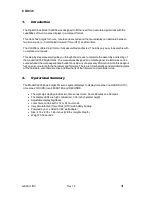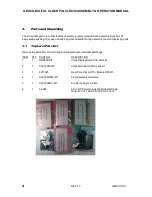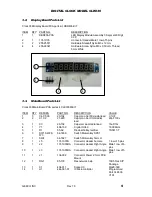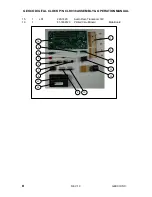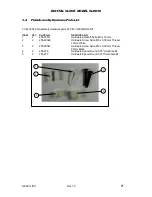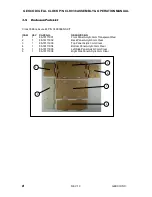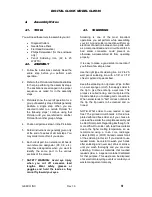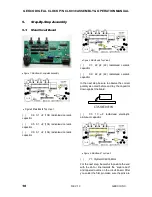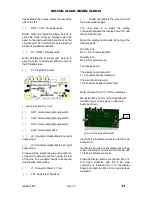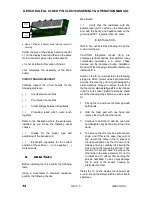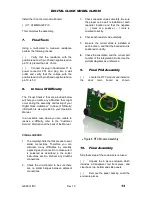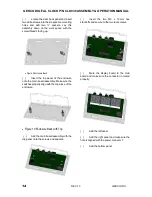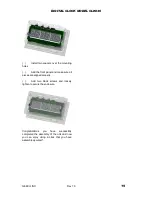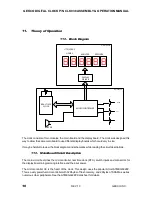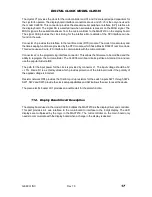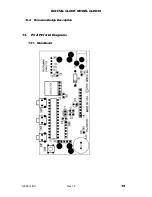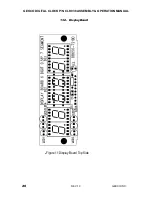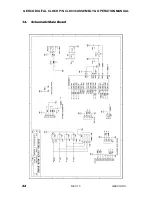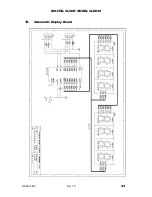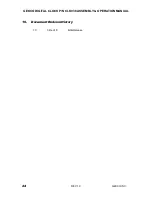
DIGITAL CLOCK MODEL CLK036
GEKCO INC.
Rev 1.0
17
The crystal Y1 provides the clock for the microcontroller and C1 and C2 are required pad capacitors for
the crystal to operate. The display board interface connectors are J4 and J5. J5 is the only one used in
the model CLK036. This connector provides the standard serial peripheral interface (SPI) interface to
the display board. The signal SS is asserted low when serial data is present on the MISO signal. The
MISO signal is the serial data stream from the microcontroller to the MAX7219 on the display board.
The signal SCK provides the clock timing for the interface. More details of the SPI interface can be
found on the web.
Connector J3 provides the interface to the real time clock (RTC) module. The clock time accuracy and
the time keeping function are provided by the RTC module, which has a Maxim DS3231 real time clock.
This device uses a 3 wire, I2C interface to communicate with the microcontroller.
Connector J2 is the programming interface connector. This allows the firmware to be modified and the
ability to reprogram the microcontroller. The CLK036 main board looks just like a Arduino Uno and can
use the popular Arduino IDE.
The path for the input power for the clock is provided by connector J1. The input voltage should be 5V
+/- 5%. Diode D1 is a schottky diode which provides protection of the internal circuits if the polarity of
the applied voltage is incorrect.
Resistor network RN1 provides the 10kohm pull up resistors for the switch inputs SW1 through SW4.
SW1, SW2 and SW3 provide the clock setup capabilities and SW4 allows the user to reset the device.
The piezo electric buzzer LS1 provides an audible alert for the alarm function.
11.2.
Display Board Circuit Description
The display board used in the model CLK036 utilizes the MAX7219 as the display driver and controller.
This part provides a 4 wire interface to the main board to interface to the 8 digit display. The LED
displays are multiplexed by the logic in the MAX7219. The microcontroller on the main board only
needs to communicate with the display board when a change in the display is desired.

